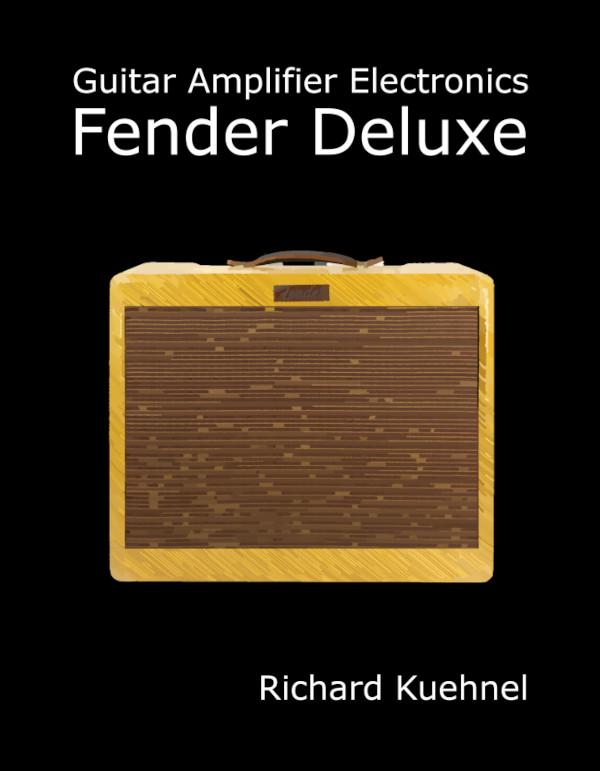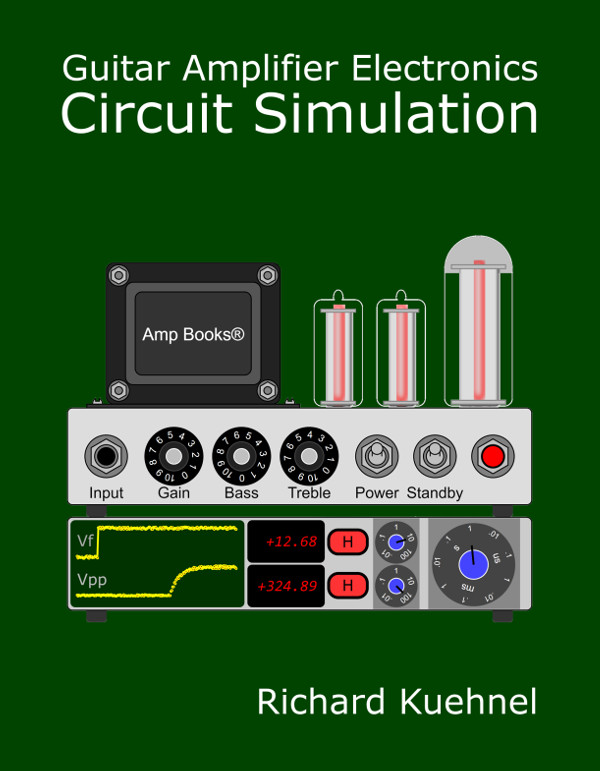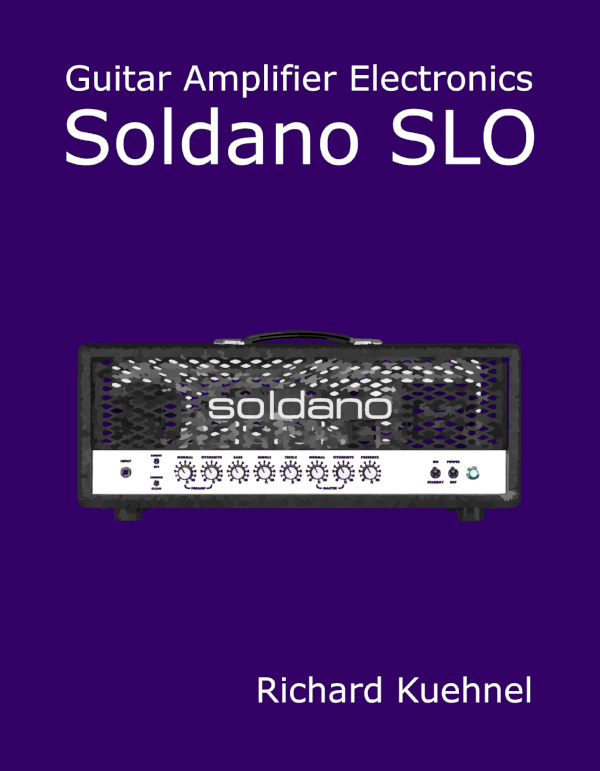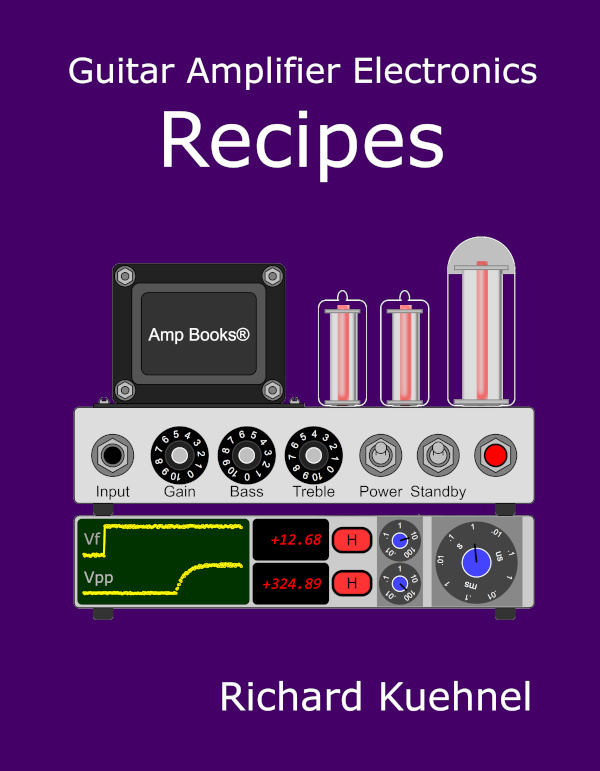Soldano SLO Global Feedback Controls
The Soldano Super Lead Overdrive has always had a presence control in the feedback circuit. A depth/resonance control, on the other hand, was originally an optional feature.
"Historically, one of the most popular SLO 'mods' is the addition of a DEPTH control to the amplifier's power section. The Depth control is now standard on the SLO-100. The combination of the Depth and Presence controls provides a powerful EQ section that goes well beyond a typical tone stack, enhancing the tonal possibilities of the amp's sonic character." 1 -Soldano Custom Amplification
The depth control (circa 2007) is fed from the 4Ω tap of the output transformer secondary.

According to the Phase Inverter Bass Response calculator, the 0.047μF coupling capacitors create a flat response over guitar frequencies while attenuating sub-audio signals.

Voltage gain is approximately 27.

|
Guitar Amplifier Electronics: Fender Deluxe - from TV front to narrow panel to brownface to blackface Reverb |
The power tubes are biased at -59V, so at full power the signal at their grids is 59V peak, 42V RMS. The SLO is designed to produce 100 watts, so the RMS voltage at the 4Ω tap is

Voltage gain from the power tube grids to the 4Ω tap is
20V / 42V = 0.48 (-6.4dB)
The forward (open-loop) gain from the phase inverter input to the 4Ω tap is therefore
(27)(0.48) = 13 (22dB)
This is the gain without feedback.

|
Guitar Amplifier Electronics: Basic Theory - master the basics of preamp, power amp, and power supply design. |
Maximum Feedback
Feedback is maximum when the depth control is set to minimum resistance, the presence control is at maximum resistance, and when the frequency is high enough for the 0.1μF capacitors to act as short circuits. Under these conditions the feedback network between the 4Ω tap and the 12AX7 grid can be approximated by a simple voltage divider.

The feedback voltage "gain" is
4.7kΩ / (4.7kΩ + 39kΩ) = 0.108 (-19dB)
Closed-loop voltage gain is therefore2

This is 7dB less than open-loop gain.

|
Fundamentals of Guitar Amplifier System Design - design your amp using a structured, professional methodology. |
Depth and Presence Control Performance
With the depth control at maximum resistance, the break frequency for the 0.0047μF capacitor is

Here is a SPICE AC analysis simulation3 from the phase inverter input to the 4Ω speaker tap for three settings of the depth control: minimum (zero resistance, blue), 50-percent rotation (10-percent resistance, red), and maximum (1MΩ, green).

With both controls at zero resistance, the 0.1μF capacitor above the presence control has a break frequency of approximately

Here is the response with the depth control at minimum (zero resistance) and the presence control at minimum (25kΩ, green), 50-percent rotation (10-percent resistance, red), and maximum (zero resistance, blue).


|
Guitar Amplifier Electronics: Circuit Simulation - know your design works by measuring performance at every point in the amplifier. |
Here is a simulation that steps both controls through the previously plotted knob positions, for a total of 9 combinations of control settings.

Soldano's choice of parts values creates a broad palette of feedback control with a 7dB range. The crossover point for the two controls is at about 600Hz. With both controls at minimum, the phase inverter and power amp response is flat, negative feedback is at maximum, and there is a feedback-induced accelerated transition to overdrive.4 With controls at maximum, there is a slight amount of middle scoop and a more gradual transition into distortion as the power tubes are overdriven.
References
1Soldano product description. Available at https://www.soldano.com/products/classic/slo-100-classic/ (Accessed May 17, 2020)
2Richard Kuehnel, Guitar Amplifier Electronics: Basic Theory, (Seattle: Amp Books, 2018), pp. 142-153.
3Richard Kuehnel, Guitar Amplifier Electronics: Circuit Simulation, (Seattle: Amp Books, 2019).
4Richard Kuehnel, Guitar Amplifier Electronics: Basic Theory, (Seattle: Amp Books, 2018), p. 152.

|
From system design concepts to individual stage operation, an all-new examination of Bassman electronics. |


